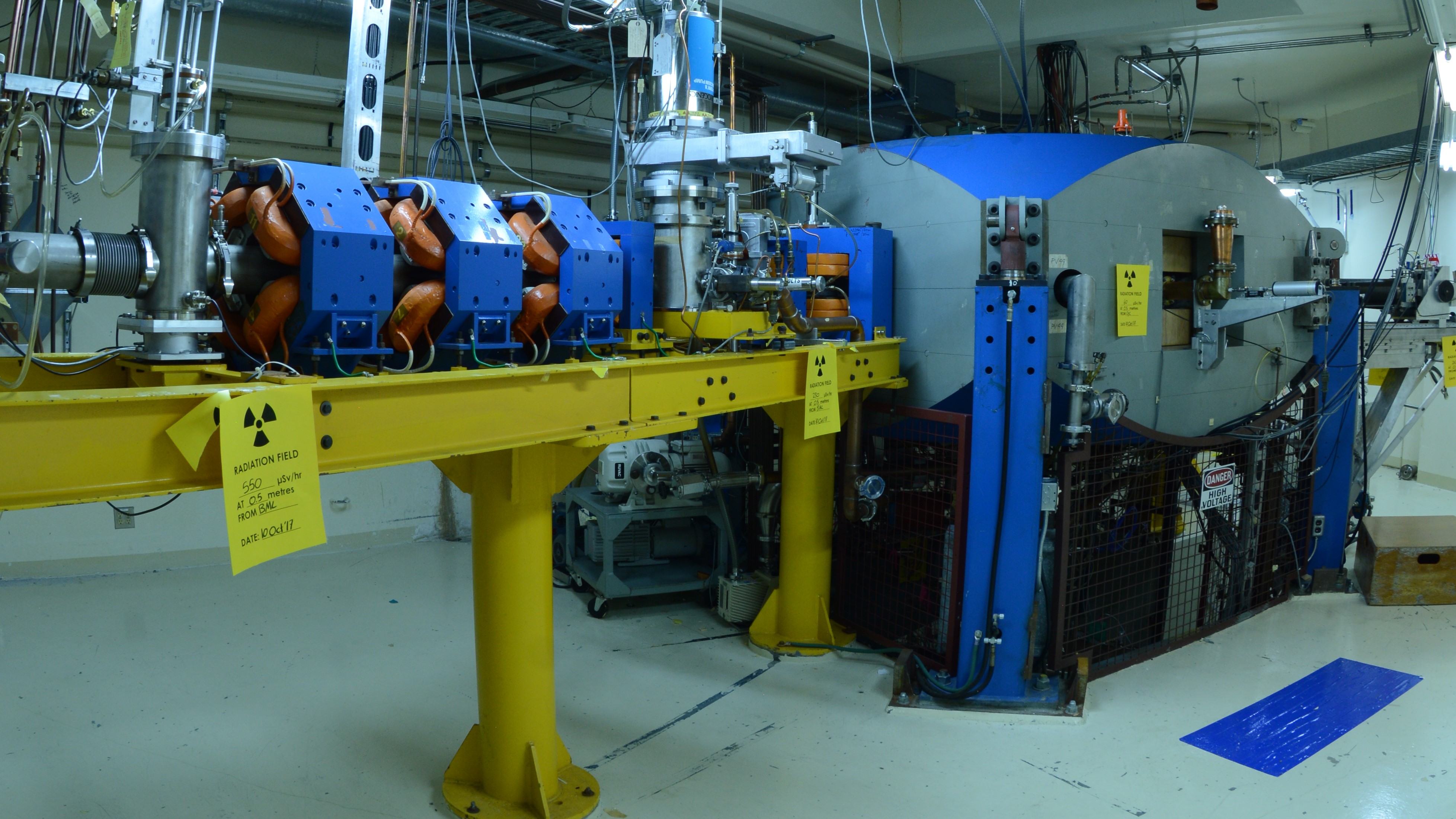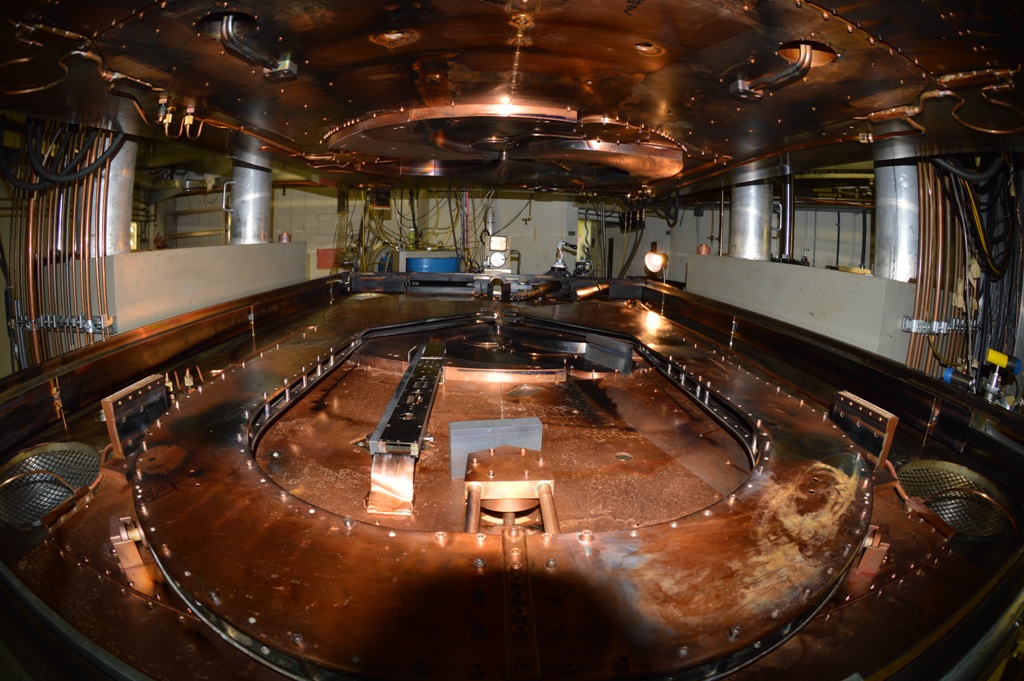Early Years
TRIUMF’s Applied Technology Group began as a part of the Applied Program at TRIUMF. In 1979, an agreement between TRIUMF and Atomic Energy of Canada Ltd. – Commercial Products (AECL-CP), who would later become Nordion Inc., and then BWXT Inc., allowed for the installation of radioisotope laboratory facilities. These new facilities were managed by the Applied Technology Group, led at the time by Joop Burgerjon: TRIUMF’s first employee and Chief Engineer during the lab’s founding. ATG’s primary responsibility was the production of radiopharmaceuticals for commercial use; however, the team also supported nuclear medicine research at the lab by producing the radioisotopes used by the TRIUMF PET group, and contributed to the construction of the first TRIUMF PET scanner in 1981.
The ATG Cyclotrons
With these new facilities also came a new addition to the site. On December 12, 1981, the first cyclotron dedicated to commercial radioisotope production arrived at TRIUMF. The CP42, a machine much smaller than the 500 MeV main cyclotron, is now the oldest cyclotron at ATG. It was ordered from the Cyclotron Corporation in Berkeley, California, installed in 1982, and officially commissioned in 1983. Operated by ATG, the CP42 provides BWXT with its own driver for radioisotope production, instead of relying on the main cyclotron.
Increasing demand for medical isotopes resulted in the CP42 being followed by the TR-30 cyclotron, installed in 1990. Like its predecessor, the TR-30 was destined for commercial radioisotope production in partnership with BWXT Inc. Construction of this TRIUMF-designed machine began in 1988 in collaboration with Ebco industries, a long-time partner of the lab who played a major role in the construction of the original cyclotron. TR-30 would be followed by the TR-30-2 in 2003, making a total of 3 cyclotrons managed by ATG.
 |  |
| The TR 30-1 | The CP42 cyclotron tank |
Major Milestones
1979: Collaboration between TRIUMF and AECL-CP establishes radioisotope laboratory facilities.
1981: First commercial cyclotron – the CP42 – arrives on site.
1983: CP42 officially commissioned.
1988: TR-30 construction begins in partnership with Ebco Industries.
1990: TR-30 officially commissioned and technology transfer agreement is made which allows Ebco to construct, manufacture and supply commercial cyclotrons.
1992: ATG expertise is called upon to install vertical target stations in Belgium.
1993: ATG installed vertical target stations on the TR-30 in Taiwan.
2002: Ion source technology transferred to D-Pace. Between 2004 and 2011, several high current cusp ion sources were tested and commissioned by ATG for D-Pace.
2003: TR-30-2 officially commissioned and Advanced Cyclotron Systems Inc. (ACSI) is formed as a result of the technology transfer between TRIUMF and ACSI’s affiliated company, Ebco.
2005: ATG completes control room move and system upgrade.
2010: ATG updates original 1978 control system for the Isotope Production Facility (IPF) at TRIUMF.
ATG Today
The Applied Technology Group at TRIUMF continues to operate and manage these three cyclotrons, as an important element of the symbiotic relationship between TRIUMF with BWXT. Every week, the team delivers 35,000 patient doses of medical isotopes for BWXT, which are used around the world.
ATG also maintains the Solid Target Facility and the Isotope Production Facility, both connected to the main cyclotron. The team collaborates with groups across the lab, providing support through their expertise in designing setups and systems for use in high contamination and high radiation areas – systems that are resilient, modular, and easy to maintain.
